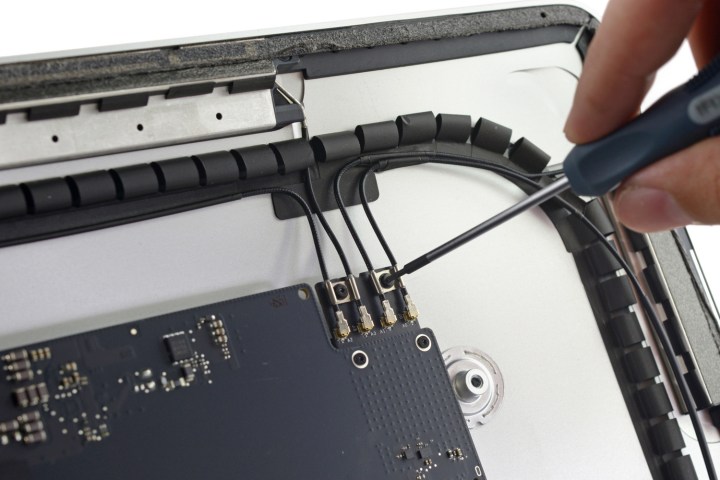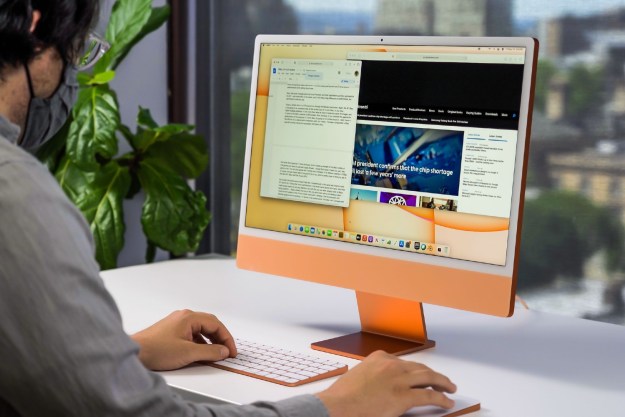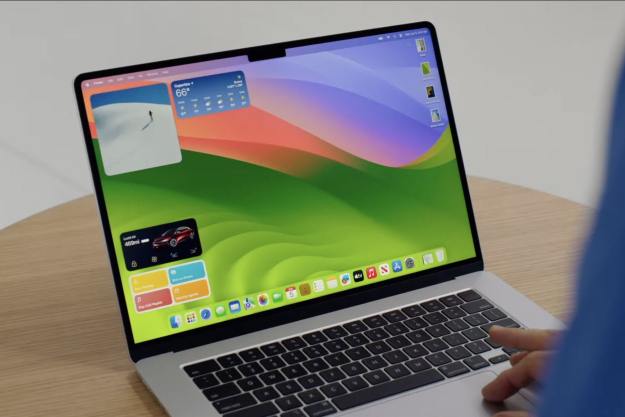
A teardown of the new desktop all-in-one conducted by iFixit discovered many of the usual Apple difficulties, including torx screws, a display that’s glued to the body, and a lack of convenient service panels on the back. But unlike its big brother, the 27-inch iMac, the latest entry to the family is built like a MacBook. The RAM is soldered to the logic board and the Fusion Drive connector is not present, meaning you can’t add to or replace either. What you bought is what you’re stuck with until the iMac dies.
The CPU is also soldered to the logic board. That, however, is no different from the previous 21.5-inch iMac.
On the whole, the latest model represents a new low in iMac reparability. The current 27-inch iMac with Retina is not in as bad a shape. It includes a replaceable CPU and hard drive, and the RAM can be easily upgraded or replaced by opening a rear service door.
Given its many built-in repair roadblocks, it’s no surprise the system received a score of one (out of ten), the lowest yet for any iMac. The only good the iFixit crew had to say was that cutting the adhesive tape holding the display in place wasn’t too difficult – though it ultimately didn’t matter, as there was nothing inside to repair, anyway.
It’s a shame that Apple had to make these compromises to put the system out the door. Apple’s iMac with Retina starts at $1,500, which is quite a lot for an all-in-one with such a small display, and that version comes with just eight gigabytes of RAM. If Apple keeps to its past track record, it should receive support for seven to eight years, and it’s possible that the standard 8GB of
Apple clearly believes that design is more important than reparability. If you don’t agree, well – at least Windows 10 is pretty great!
Editors' Recommendations
- I need to change how I use Apple tech in 2024. Here’s how I’m going to do it
- A new iMac Pro could still launch. Here’s what I want from it
- How to watch Apple’s ‘Scary Fast’ Mac launch event if you missed it
- The M3 iMac is here, but it’s missing its most requested change
- Apple’s next Mac event promises ‘scary fast’ reveals


